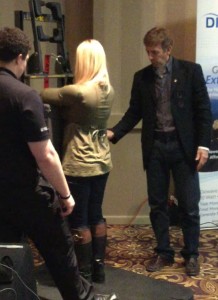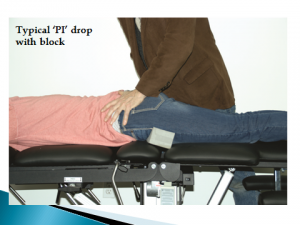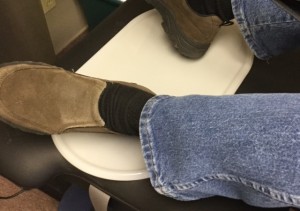The ATM2 device at Kdt seminars
 Many of those who attend our certification seminars are surprised to find we reserve a segment of the seminar to discuss and demonstrate the ATM2. Others are surprised we don’t spend much more time given the importance we tend to impute on it as a co-treatment to decompression-traction. The primary reason I discuss it and will demonstrate it on several attendees is simply due to my great faith in it as a viable and demonstrably effective modality. Active-interventions & exercise can NEVER be discounted in a clinical encounter. In acute pain conditions exercise per se is generally avoided….however in many “acute” conditions the ATM2 IS the treatment of choice. This is even more so in chronic cases and confusing diagnostic profiles where movement disorders scuttle clear indications to or benefits with adjusting.
Many of those who attend our certification seminars are surprised to find we reserve a segment of the seminar to discuss and demonstrate the ATM2. Others are surprised we don’t spend much more time given the importance we tend to impute on it as a co-treatment to decompression-traction. The primary reason I discuss it and will demonstrate it on several attendees is simply due to my great faith in it as a viable and demonstrably effective modality. Active-interventions & exercise can NEVER be discounted in a clinical encounter. In acute pain conditions exercise per se is generally avoided….however in many “acute” conditions the ATM2 IS the treatment of choice. This is even more so in chronic cases and confusing diagnostic profiles where movement disorders scuttle clear indications to or benefits with adjusting.
Additionally every clinician needs active–interventions that supplement passive ones…and the ATM is without equal. I recognized the advantages to having an ATM2 and the large number of patients having disordered–movement patterns attendant with compression that thrive with it as part of the program.
The manufacturer of the ATM2 offers the complete education that most new owners will require to really get-with-the-program. Our seminar discussion is rudimentary and meant as an introduction. We recognize many are focused entirely on their decompression education and don’t want to be side–tracked! If however you are interested in more detailed instruction from us while attending a Kdt seminar we’ll be happy to give you additional one-on-one instruction.


